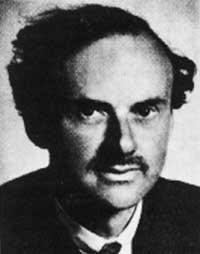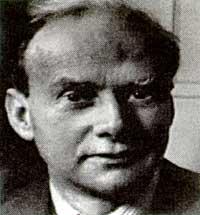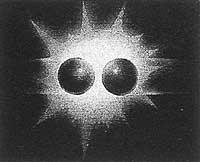What is antimatery?
2000/11/22 Elhuyar Zientzia
In 1930 the British physicist Paul Dirac completed the quantum theory that explained how electrons moved in magnetic and electric fields.
This was the first quantum theory compatible with Einstein's "Theory of Special Relativity". Dirac's equations described the electron, but at the same time described another particle containing the same mass as the electron but with opposite charge. Moreover, the electron could not appear without opposite particles. That special particle was positron, the first antiparticle described. In 1931 other experiments ratified Dirac's theory and could physically detect positron.
But Dirac's theory refers not only to the electron, but to all the particles that form matter. Each type of particles has its own antiparticle, which has the same mass and its properties are practically the same; the only one that changes is the electric charge. If the particle load is positive, the antipart charge will be negative and vice versa. The physical laws that serve to describe particles also describe antipartas, so there are no major differences between matter and antimatery.
But the world we know is made up of matter, but not antimatism. Why? When a particle and its antipart are found they destroy each other. It is believed that at the origin of the universe there was the same amount of matter and antimatería, but today there are very few antimaterías. Why? What has happened to all this antimateria? These questions remain a source of concern for scientists.
If the antimatería had been destroyed with the matter that corresponded to it, the universe would not be everything, that is, there would be no matter; the imbalance between matter and the antimat, therefore, the property of the world that we know

Gai honi buruzko eduki gehiago
Elhuyarrek garatutako teknologia






